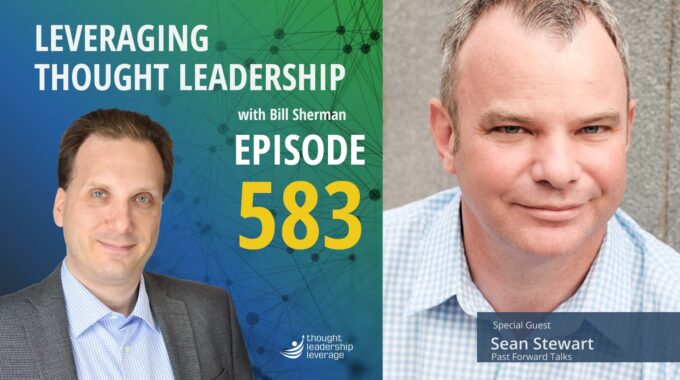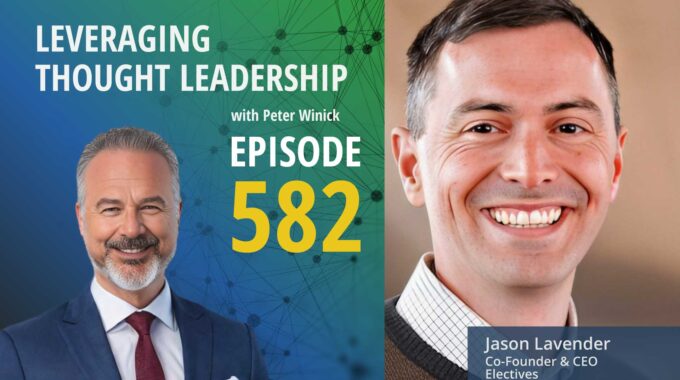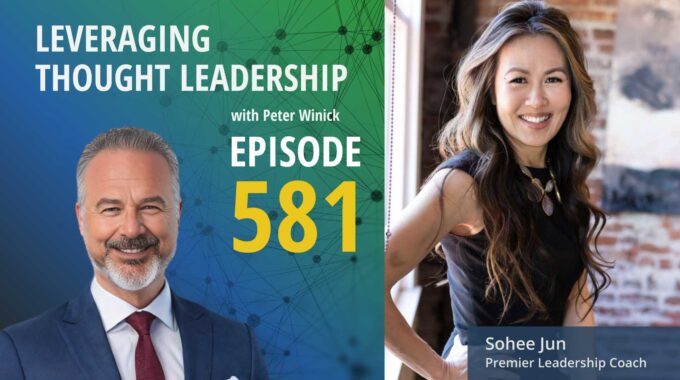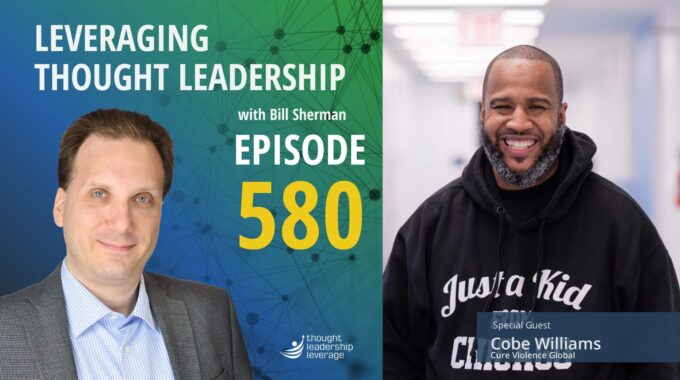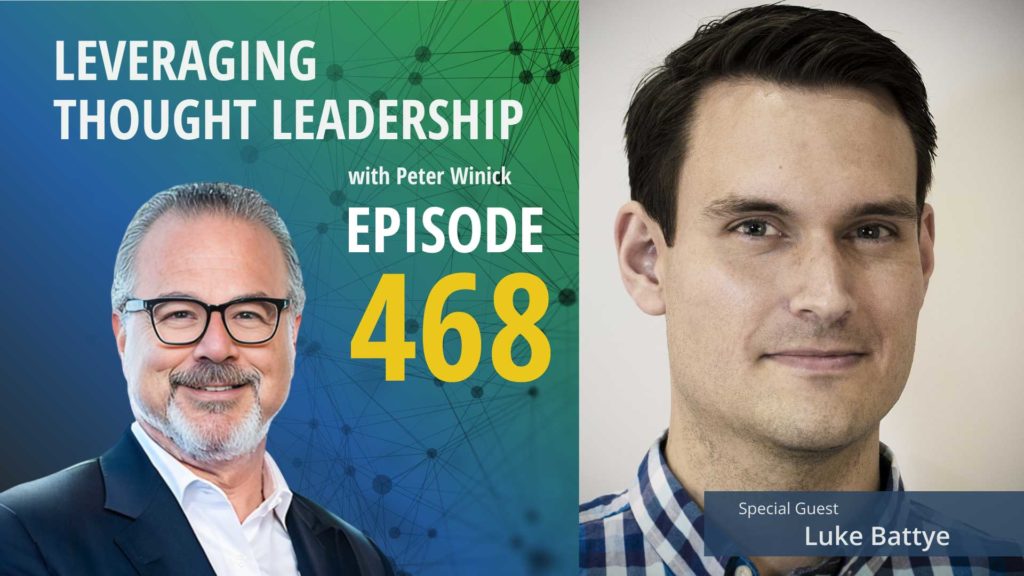



Understanding what it takes to create behavior change to solve complex problems.
An interview with Luke Battye about his work as a change consultant and thought leader.
The best and biggest ventures start by having a dream, and taking risks.
Knowing when to keep your feet on the ground, and when to make a leap of faith, is a critical skill.
But how do you know when it’s time to jump?
Our guest on today’s podcast is Luke Battye, the founder of Sprint Valley, a change consultancy that helps teams enact their vision, navigate risks, and make bolder moves!
In a bold move, Luke starts our conversation off with a fascinating thought experiment he has never done in an audio medium, in order to help us understand how people make decisions under uncertainty. In our conversation, Luke tells us more about human brain functions, and how the choices we make are based on system 1 and system 2 responses and those are what Luke targets to create change.
Luke explains how Sprint Valley is merging the science of behavior change with the art of design thinking, to find ways to help people work hand in hand in order to solve complex problems. The amazing insights found in academia are put into tangible practice, turning the natural patterns of brain function into a model that can be understood and used in business.Often, the language of academia gets so specific it leaves the client out of the conversation. Luke shares his insights about the critical principle he calls, “taking the time to teach.” By bridging the gap between learning and implementation, teams can instantly apply newly-discovered insights to challenges they are currently addressing.
This episode is a deep dive into how the human brain functions, how consumers make choices, and the levers we can use to influence buyer intent.
Three Key Takeaways:
- Ideas are only useful if they’re functional. Don’t fill your thought leadership with verbiage that will leave your audience baffled.
- By making your methodologies open source you allow others to understand what you do and force yourself to be constantly innovating for the future.
- Take the time to teach your audience. Don’t assume they understand the concepts or models you are discussing.
If you need a strategy to bring your thought leadership to market, Thought Leadership Leverage can assist you! Contact us for more information. In addition, we can help you implement marketing, research, and sales. Let us help you so you can devote yourself to what you do best.

Transcript
Peter Winick And welcome, welcome, welcome. This is Peter Winick. I’m the founder and CEO at Thought Leadership Leverage. And today you are joining us on the podcast, which is Leveraging Thought Leadership. Today my guest is Luke Battye, and Luke is an interesting person. In 2017, he founded Sprint Valley, a change consultancy, and he has transformed teams at Intel, MacDonalds, Nike, Gordon Ramsay, Scottish Power, National Grid, etc.. So without further ado, let me just first ask what is a change consultancy?
Luke Battye Peter, it will be easier for me to explain this with an experiment – if you’re okay to give something a spin.
Peter Winick Sure I don’t I don’t have any chemistry set here, but okay, let’s do it!
Luke Battye All right. So I’ve never done this audio, so this might fail completely, but I’m going to give it a spin anyway. I want you to imagine for a second that you have landed on an alien planet, okay? And you’ve discovered these two different organisms, and one of them kind of looks like a sea urchin. It’s like, spiky. And the other one is sort of quite round and bulbous. I want you to tell me which one of those would you say is called Kiki and which one is called Buba? And don’t overthink.
Peter Winick It. So Kiki is probably the spiky thing and Buba is probably the bulbous thing. I don’t know why that’s on my brain working.
Luke Battye Okay, so why do you say that?
Peter Winick Well, Kiki kind of maybe rhymes with spiky or something, and I don’t know the languaging sounds like. Something spiky would be named Kiki, not Bulba or whatever.
Luke Battye So what’s really interesting about that experiment, I’m pretty glad that that worked in Audio Usually we show an image to bring this to life. And by the way, everybody, 99% of people say the exact same thing. But I think we can both agree that there’s no logic to that question. And yet some.
Peter Winick We’re hoping it works. 99% of the listeners might have went to now.
Luke Battye Yeah, well, let’s see. And if you’re if you’re in the 1% listening that did it the other way around, congratulations to you. But what that experiment does is actually reveal something really profound about how we make decisions as people under uncertainty. And the idea here is that when you say the word Kiki, even in your mind, you activate all the same brain regions as you would if you were saying two. And if you think about it, you actually bear your teeth slightly when you say the word Kiki. And this triggers off concepts of biting and sharpness. And similarly, when you say the word bouba, you make a round shape with your mouth. And while brain is doing here is using what we call system one to make decisions, okay?. And so this idea that we have these two systems in the brain system, one fast automatic, instinctive, low energy to use, by the way, and system two, if I was going to ask you, what’s 7.2, five times 10.2, whatever, that feeling of mental effort is system two. And because we have evolved in a calorie poor environment, our brain is wired to try and use system one instead of system two. And fundamentally what we do is take that same insight on principle, this idea that our context drives our behavior and we use it to help businesses change environments, change contexts, get customers doing different things, to get employees doing different things.
Peter Winick So I love it. So there’s a consultancy and there’s a customer experience side of this, an employee experience side of this other piece that’s really interesting. So let me go maybe a half a step backwards to where does how does the thought leadership come into play here? Because what you just did with that experiment that luckily didn’t fail is a form of thought leadership, right? You used an example based on your research. Now you had a probably pretty strong sense of confidence that I would answer that question that way. We didn’t set this up right. But you knew based on your experience in years of doing this and whatever that one and 100 shot, it’s going to go the wrong way. And then you say, Wow, you’re kind of odd actually, or whatever. But yeah, I guess my question is, how does thought leadership help you? You know, build the brand. Get the ideas out there, find new clients, solve problems, etc..
Luke Battye Now, I think I’d probably like wind back to where this business sort of originated. And so we were working with a client back in 2017. I think it was one of our early clients and they were based up in Manchester Stadium and they had they’d have 60,000 fans who would descend on the stadium at half time, they’d be 20 minutes and only 30,000 fans could ever get to the front of the queue to order any beer, food or whatever it was. We feel this is a really fascinating problem. And so what we did was analyzed how queue to forming and time in motion studies and all that stuff to understand what was going on here. And we had a very naive insight that, hey, if a typical transaction, 60 seconds, you get to the front of the queue, they said, if we could make that 30, we could get twice as many people through. And we thought, okay, well, like who’s amazing at getting people to make quick decisions about food to go? Okay, well, let’s go and see what McDonald’s today and what KFC are doing. And so we went out, ran this big study looking at how they use environment to shift consumer decision making. We went back into the academic literature, could see all of these patterns that they were using, and then we went back and implemented them into the stadium. Spend per head, went up like 8%. We ended up getting picked up by their American partners who look after AT&T Stadium and Yankee Stadium doing the same stuff. Anyway, I ended up publishing an article called McDonald’s Restaurant in the Future Why We’re Loving It, right? This then was published on a site called Behavior Economics dot com, and it was like a full tear down of all I mean it’s still there It’s great to great article but it’s a full terrain of all of the different influences that make you go it’s time to switch out of my Big Mac truck and try the new guess the Burger. And about five weeks later, I had an email from one of the directors at McDonald’s in India say, I read your article. We could do with your help with something. And so we ended up then kind of working with those guys. And so for us, thought leadership has always been kind of a core part of what we do, but we’re really interested in how do you take these amazing insights out of academia and turn them into news you can use in.
Peter Winick There for a minute? Because there’s two different threads and they’re both fascinating. So in my work, what I see a lot is sort of this battle, right? This us versus them and the US versus them are the academics or the purist, right? Everything drives to the 11 and they’ve studied it and studied it and studied it. And then you put their ideas out into the wilderness and sometimes they work and sometimes they don’t. And then they’ll say things like, well, you know.
Luke Battye The more research.
Peter Winick We do, we couldn’t control the variables in the ideal world, and they wrote it. And then you’ve got the business people that are maybe have a validated instrument, maybe they don’t. They’re working more on intuition, on gut feel and tradition or whatever. And the academics look at them and go, Oh, poo poo. There’s no science under there. And what I what I find. More infrequent than I would like to is. Wait a minute. Why don’t we both give a little bit? Like, you know, why is business people understand the limits of academics, but also the power? And I think you’re in a rare place where you’re an academic that realizes, wait, you have to do a translation job because most academics are trained and it’s a self reinforcing piece to do really, really, really good at speaking to other academics and therefore really, really poorly at communicating to the other 99.99 nine 9% of the universe 100%.
Luke Battye So that’s how we see that is there. There are two worlds that we are continually struggling to bring together here, and one of them is behavioral science. At the last 15 years, this whole space about what influences human behavior has got really robust, like super, super robust. We understand the levers pretty well now, and a lot of them are very repeatable right now.
Peter Winick Thank you, Freakonomics. Thank you. Dan Abrams.
Luke Battye Well, yeah, absolutely. And you know, a lot of the partners in Spring Valley have been part of sort of sparking the nudge unit. So everyone knew that kind of stuff. But the problem, though, has exactly, as you pointed out, is the language gets so specific in academia, it’s clients can’t take part in the conversation. And when it’s about human behavior, I think everybody should be able to take part in that conversation and understand it. So our job is to translate it. Now, the second part of this, though, is really looking at methods and process that leverage, co-design and co-creation. So bring about bringing together this world of behavior, change science with this sort of art of innovation, if you like, in a design thinking co-creation, how do you work hand in hand with people to develop new solutions to complex problems? And it’s those two pieces of the puzzle that are really shifting the needle for our clients. And it’s why a lot of our clients now private equity backs, because we can create results. But we have this constant tension, as you pointed out, of forcing academics to take a position, but then really leveraging this sort of more experiment, iterate mindset to kind of work through the teething problems as you get into execution, which I don’t know.
Peter Winick If you’re enjoying this episode of Thought Leadership Leverage, please make sure to subscribe. If you’d like to help spread the word about our podcast, please leave a five star review at rate this podcast dot com forward slash l t l and share it with your friends. We’re available on Apple Podcasts and on all major listening apps as well as at Thought Leadership Leverage dot com forward slash podcasts.
Peter Winick And I would also propose or think that there’s also a piece of your culture as an organization that I would imagine, whether it’s stated or not, one of your values is to not intimidate, right? Because oftentimes unintentionally, an expert be that on the business side or a consultant or an academic, when they come to a lay person, they don’t mean to be patronizing or intimidating, but they start to get into, oh, and the research closes and they get really technical because they’re so used to jamming with their peers and they’re like, well, you know, one of our.
Luke Battye So one of our one of our principles, I think you picked it up beautifully is take the time to teach. And that’s just one of the things that we’ve learned. You know, we use our own medicine on our own business. And one of the things we’ve learned in spending lots of times interviewing customers and understanding what we’re doing well, what we need to change, what kinds of things they say they come away from the project smarter. And it’s because what we do is we take these complex challenges and use frameworks to.
Peter Winick Right.
Luke Battye Them. Simple enough people can start taking action on, but we’re super hot. I’m trying to cut the jargon out of this, and that’s the fun I have, is bringing together people who get it, but then forcing them to really work on a problem within a time limit, which in academia you don’t necessarily have, right? We can always end our paper with needs. Further research. That’s great and that’s acceptable. But we know when you’re charging for your consulting services and a client has a problem to solve, it doesn’t quite work the same way. And so we’ve got to get somewhere good and hedge your bets.
Peter Winick And so I think that’s a good.
Luke Battye Exciting dynamic, you know?
Peter Winick Yeah, I think that’s a great sort of mantra for any expert thought leader, etc. to say, Have you taken the time to teach? Right. And I think when I think about like some of the greatest business books of the last 20 years, they’re not the highly technical. They might not have been using that exact words, but they are approachable. I could I you know, I’m a somewhat intelligent person, right? So I could understand it. I could read it. I get the approach. I get the approach pretty quickly and I understand the outcomes and the benefits and why I would consider it. So I think that’s really interesting.
Luke Battye But it’s like these ideas are only useful if you can use them. I and for me, if I can engage with a client and have a. On a level in what we’re talking about, and they can take part and have their own ideas about how that can be applied. Then we get to leverage all of our perspective in a way that we don’t have our very experts in that business, not us.
Peter Winick Well, when you look at.
Luke Battye Both of those things.
Peter Winick When you look at what’s happened, you know, particularly the UK and now it’s starting to help and elsewhere with these nudge units, they in essence, took concepts from behavioral economics that said, well, the little things that we can do to change the way people make decisions, not necessarily persuade them, but influence, Right? So we’re not you know, it’s not manipulation. It’s not go buy the.
Luke Battye You’re changing the contract.
Peter Winick Right. And you still have the agency to opt out of these decisions. But when we see it used for good in things like 401k savings deferral rates, you know, I’ve read studies on organ donation making default when you get your driver’s license. Yes, I will versus no, I won’t because I forgot what the numbers were so like. 90% of people said they would donate their organs after they passed, but only 20% of people have actually gone through the effort to do it, because there’s a lot of steps you got to take if you make that the default. More people with the defaults. Right. I love seeing because there aren’t that many domains or practices where you can see such powerful and compounded benefits of people making better choices, better choices for them, better choices for society. But, you know, on and on and on. I mean, it’s pretty amazing.
Luke Battye And so what we’re doing now after that experience, sort of, gosh, we’re a five year old business now with the stadium and seeing this can really drive business outcomes. We’ve kind of been looking at how do we take that same methodology and mindset and apply it to lots of different classes of challenge. And one of the ones more recently we’ve been getting really good at is how do you get employees in a large, complex organization leaning into innovation, right? And so for us, there’s this formula for behavior change that underpins all of those nudge units you’ve just described. It’s called comedy. The idea that for any behavior there are these three necessary prerequisites. I’ve got to have the capability, which might be psychological skill, confidence, or it could be physical skills, but the opportunity to do that new thing, which could be around systems process tools, but also gear supports. And then there’s got to be motivation. I’ve got to know why I’m doing it, what’s in it for me? And I need the feedback loops to know whether or not I need to kind of course correct how I approach illness. And so we take that formula then and can apply that into a particular business challenge. It said, okay, great, well where are we now? What are the pieces of this puzzle that we have or don’t have? And then we can start using some of this framework to study. Okay, well, what could we do differently? What are some of those key levers we’re not pulling right now that could make the difference? And we’re finding that, yeah, this is really fast tracking the adoption of innovation skills and the application of and innovation skills inside a large organization.
Peter Winick So coming back to the thought leadership, because your business is based on the thought leadership.
Luke Battye I believe that could certainly.
Peter Winick Give me a sense of and if you’re looking over, let’s say, the next 12 or 18 months, where you’re going to be using thought leadership to, number one, elevate the brand because your brand punches above its weight, you’re attracting big, big, large companies. You’re a small entity. So where do you use it to elevate the brand? And then where and how do you use it for net new client acquisition? Two different use cases for the thought leadership.
Luke Battye Yeah, so I’d say they actually combined. So we’re doing a lot in terms of executive education, creating partnerships with, you know, organizations like Warwick Business School and really trying to take our methods as a kind of quite practical consultancy and then get those into business leaders who are looking for new ways of thinking about solving some of the the uncertain problems that they have. And so for us, our big focus is really around that executive education piece and looking for ways to help people get to grips with applying this stuff. So trying to take that, learn and implement gap and close it and have teams take a concept and actually start applying it instantly on challenges that they’re trying to work on in our own business. And for us, our method is very experiential and so it’s a difficult thing to properly communicate. And so for us it’s really around how do you get people to experience it, How do you get people involved? We do a lot now in terms of publishing and we’ve open sourced, I’d say 80% of our methodology, like your listeners can go grab it right now. All the resources we use to bring on board new members of our team and train them, you know, toolkits around how to build high performing teams, toolkits around how to solve complex challenges, toolkits around behavior change. And that’s another way that we’re seeing is has been pretty valuable in connecting with people who are trying to solve the problems that we’re really focused on.
Peter Winick I love it. So great example of a business, you know, a you mentioned sort of eating your own dog food, but really putting out the thought leadership to attract people, the right people in the right way cost effectively into the firm. And I would imagine that when someone reaches out, like you mentioned, gentlemen and McDonald’s, India, from a sales process standpoint, they’re on third base, right.
Luke Battye Like it’s they know a lot about what you’re doing and they understand it really, really well. And I think, you know, there’s been lots of internal debate about to what extent should we open up and give away our method. And my thinking on that is pretty rudimentary, which is just, hey, if we put it out here and we see that there’s, you know, 20,000 downloads of this stuff, then maybe we would decide to pay a lot. But equally, if there isn’t and it’s pretty small and people are coming in and it’s attracting the right people, frankly, it’s not too much of a concern. The other thing that it creates, though, in the business is it forces innovation, because what we’re doing is getting ahead and say, okay, this is what we’re seeing work. You can use this. But in order for us to have a point of difference, we don’t have to continually reinvent and add to that. So our toolkits called Springboard, that’s all available now, that’s kind of version two. We’re now operating in our consulting projects on version three. And so again, we can kind of push out the stuff that we’re very confident with, but we’re always then and having to look ahead and work out what’s the next thing that we’re going to be doing to, you know, strengthen this and make it work harder.
Peter Winick Got it. Excellent, great stuff. I appreciate your time, Luke. Appreciate your your energy and you’re sharing your work with us and wish you the best. Thank you so much.
Luke Battye Thank you, Peter. Good stuff. Enjoy.
Peter Winick To learn more about Thought Leadership Leverage, please visit our website at Thought Leadership Leverage dot com to reach me directly. Feel free to email me at Peter at Thought Leadership Leverage dot com and please subscribe to Leveraging Thought Leadership on iTunes or your favorite podcast app to get your weekly episode automatically.




